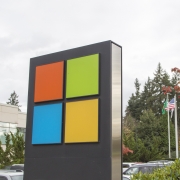Open Communication Channels Are Vital To Recovery
Introduction
All Disaster Recovery Plans should include a communication module so employees know how to communicate with each other and from whom they will receive official information about their company during and after a disaster. Leaving this section out is a big mistake that can cause mass confusion and misinformation during the critical recovery phase.
Plan and avoid confusion
When a company suddenly closes down due to a catastrophic event, it is important that employees know who will be keeping them up-to-date with official information otherwise you’ll leave it up to them to find out what is happening and passing that information on to their coworkers. Management will quickly lose control over the internal news medium giving way to misinformation and possibly precipitating panic among workers. Additionally, misinformation may spill into the mainstream media, doing damage to a company’s reputation.
The best way to avoid this is to have a well-documented communication plan so employees and customers receive accurate and timely information regarding the recovery status of the company.
A few things to include in your communication plan
- The plan should clearly specify who in management will contact employees and customers with official information. If the company is sizable, the plan should contain a matrix showing the department or area, identify the manager responsible for disseminating official information with full contact information.
- The Communication Plan should identify the persons authorized to post official information to the company’s web and social media pages. This must be clearly documented since inaccurate information, posted to social media can quickly get out of hand.
- There should be a way for employees (and separately, clients) to get official information from the web. Consider private LinkedIn groups for employees and a separate one for clients as well as official twitter and Facebook accounts for giving out public information.
- Finally, only specific, authorized personnel should be able to directly contact clients with information regarding the recovery and this should be clearly documented in the Disaster Plan so all employees are aware.
Protect your most vital communication medium—email
This brings us to another topic that is a whole new discussion in and of itself. Many companies host their email onsite—usually Microsoft Exchange. If a disaster either damages or destroys a company’s onsite equipment, they will lose their email! Don’t let this happen.
As part of your Disaster Recovery Plan, you should host your email in the Cloud using Microsoft Office 365 (MSO365). Microsoft has great cost-effective business plans that also include access to the full Microsoft Office Productivity suite for users. An unbeatable value.
Using MSO365 simplifies your onsite infrastructure and protects this vital communication medium. If your equipment is damaged or destroyed, you’ll still have email access from any location with an internet connection.
Conclusion
By documenting the communication process, management can control the flow of accurate information to the appropriate people in a timely and efficient manner, keeping conjecture and panic to a minimum.
We created an MS Excel-based template that will help you quickly put together a basic BDR plan. Our easy-to-use template guides you through the process, providing ready-made sheets—including a Communication Plan. Simply fill in the forms. Each sheet has sample data to guide you. It’s FREE and easy.
XSolutions is a Managed Services Provider (MSP) and provides 24/7/365 remote monitoring, scheduled workstation and server maintenance, Help Desk Services, Business Continuity Solutions, Cloud & Hosted Services and IT Consulting. Call us at (845) 362-9675 and see how we can help your company.












